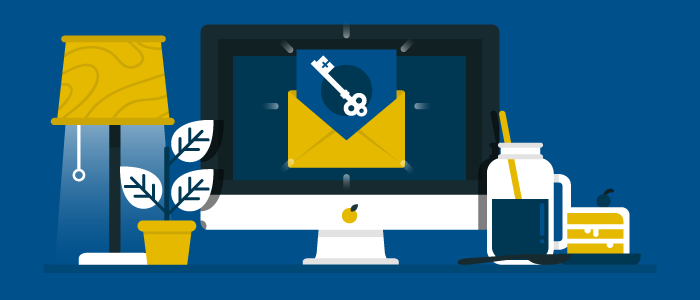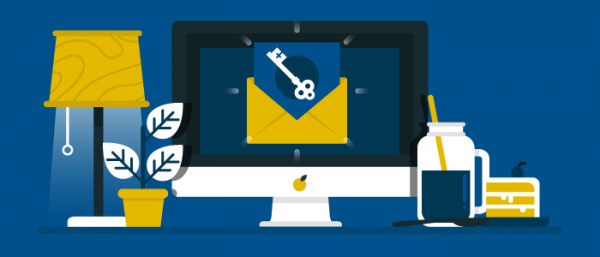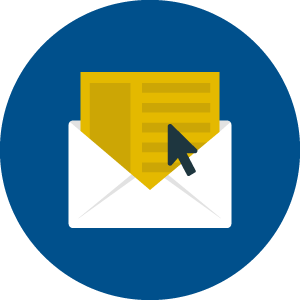
Improve open, click-through, and conversion rates with these email template testing ideas

Even our best-performing emails tend to drop in engagement rates over time. In fact, every time we change email templates we will typically see a boost in click-through rates. This reason is mostly based on something new and shiny appearing in people’s inboxes. Even subscribers who get your email every day may sometimes get so used to seeing it that they save the message to be read at a later time. But when something new pops into their inbox, readers get curious and explore.
It’s for this reason that we always suggest email template testing. Maybe not every week, but at least once per year or if you see your numbers on a slow decline. Here are a few areas where you might be able to tweak your email template.
10 email template testing ideas
1. Email subject lines
A much less dramatic email template testing idea is to test your email subject lines. Every professional email service provider has A/B testing functionality, and you can use your test results to decide how you want to style subject lines in the future. Check out our 17 best email subject lines.

2. Preheaders
Preheaders are the new “from line.” Just kidding, but they are becoming just as important. Recently we wrote about why we’re encouraging all of our clients to use preheaders, but the gist of it is this: there are three things a user sees in their inbox: the subject line, the from line, and the preheader. If you don’t create custom preheaders, you probably have something like ““Having trouble viewing this email? View this email on the web” or similar wording when people see your email because most email browsers will just pull in the first text it reads, and most of us have a link to the web version of our emails front and center. Read the article linked above, and try using the subhead (not the title) of your article in this precious space.
3. From lines
The most popular and fruitful test we’ve seen is when the “from line” of a promotional email is replaced with the full name of the spokesperson for your company. For example, after we started sending our business development promotional emails directly from our founder Don Nicholas, those emails started having our all-time highest open rates. And those promotional emails are a letter from Don anyway, so it’s only fair. I suggest trying this out, but sparingly. You don’t want to overuse a good strategy like this.
4. Above the fold content
What people see when they first open your email, the content before it gets cut off, is called the content above the fold. Once you start scrolling, that’s below the fold. Some publishers choose to have a table of contents at the top of their email newsletters, while others make sure the snippet of their featured article appears front and center. Other publishers who are ad-driven may make their advertiser show up above the fold. And when you’re selling impressions and clicks, this is a good strategy. When you look at your email, what appears above the fold? Is the main action you want them to take above, or below?
5. Content
There are a few aspects of your content you can test. Text to image ratio is one. Long copy vs. short copy is another. With snippet-based email newsletter templates, we tried an experiment where we removed the snippets and just left the titles and subheads. We were sure this would improve click-through rates with such limited content, but it decreased them! Not all tests are good results, but it was good to know that our short copy snippets work best.

6. Calls to action
When you want your audience to click, what works best? Do images work better than buttons? Does hyperlinked text work better than both images and buttons? In terms of email template testing, this is a must.
7. Number of calls to action
When it comes to consumption, of content, products or otherwise, users like less choice. Being specific about your calls to action, and not littering your email template with links could actually increase your click-through rate. If you think there may be too many things to click in your emails, try to remove ones in snippets first, while keeping “read more” links prominent. Also, read this interesting study published by Harvard’s Program on Negotiation about how consumers deal with choice overload.
8. Send times
Have you tested the times you send your email newsletters? Perhaps a different time may result in more engagement. Trying testing between morning, afternoon, and evening to see which resonates the best with your audience.
9. Video
Although we haven’t had substantial enough data to show in a monetary way that video converts better than no video, we highly recommend adding a video clip to the top of your promotional emails when you can. In our experience, it always improves click-through rates. A great way to use video in promotional email template testing is when you have an event. You can shoot video testimonials and then piece them together to promote your next event. Or, if you sell DVDs or online courses, create a short trailer to promote them.
10. From full-length to snippet
Our clients and ourselves have found that when going from full-length email newsletters to snippet-based, we’re able to promote more articles per day in an email newsletter. With that, and also because we’re not “giving away the whole cow,” we’ve seen an increase in click-through rates. Some publishers may be tempted to publish one article per day and publish it in its entirety within the email newsletter. However, this gives readers very little reason to click back to your site. A snippet-style template relies on a headline and 30-50 words of copy to entice readers to click further. In this format you have the opportunity to include multiple stories and still have the overall length of the email newsletter a fraction of a full, single article.
What would you add to this list of email template testing ideas? Leave a comment below.


